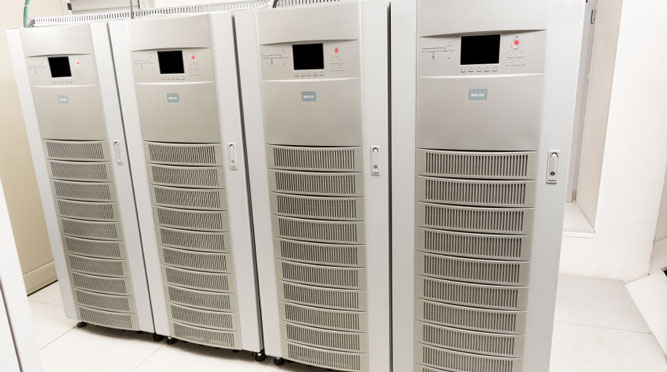- Electric Vehicles
- Advanced Nuclear Fission
- Hydrogen Fuel Cells
- Alternatives to Conventional Oil Wells
- Advanced Coal Technologies
- Biofuels
- Advanced Nuclear Fission
- Hydrogen Fuel Cells
- Alternatives to Conventional Oil Wells
- Electric Vehicles
- Advanced Coal Technologies
- Biofuels
iStock.com/3alexd
Electric Vehicles
Many new vehicle technologies have the goal of steering automobiles away from dependence on fossil fuels. One option is the all-electric, battery-powered vehicle that uses no gasoline or diesel fuel and does not directly emit any carbon dioxide (CO2). However, as much as two-thirds of the electricity used to recharge the vehicle’s batteries is produced by burning fossil fuels, the nation’s single largest source of greenhouse gas emissions. Add in CO2 emissions involved in manufacturing the cars and batteries and a battery electric vehicle’s (BEV’s) “carbon footprint” is much larger than it might seem.
Even if the typical electric vehicle range is small (ordinarily less than 100 miles on a fully charged battery), it would still be enough for more than 90% of all household vehicle trips in the United States.
Between 2010 and 2015, consumers purchased approximately 210,000 BEVs and 190,000 plug-in hybrid electric vehicles (PHEVs)—small numbers compared to 226 million registered vehicles in the United States. Total U.S. sales of plug-in electric vehicles (PEVs) have increased in recent years, but still represent only about 0.7% of new vehicle sales in 2015. California is home to almost half of all of the nation’s PEVs, but even in California, only about 5 out of every 1,000 registered vehicles are PEVs.
If that market share is to grow substantially, research and development will need to provide advances in energy storage. At present, batteries that store enough electricity to give a vehicle acceptable driving range are typically expensive, large, and heavy. Research is under way to find technologies that permit significantly more energy to be stored in a smaller, lighter package.
Even if the typical electric vehicle range is small (ordinarily less than 100 miles on a fully charged battery), it would still be enough for more than 90% of all household vehicle trips in the United States, according to the Federal Highway Administration. At present, these vehicles are not well-suited to longer trips, but that may change when BEVs with a 200 mile range become widely available.
The current typical ranges of BEVs would require refueling at direct current (DC) fast-charging stations. Frequent DC fast-charge refueling to extend a trip beyond the vehicle’s all-electric range, which takes about 20 minutes, can be inconvenient for drivers of limited-range BEVs. It is unknown what level of tradeoff between cost and range of a BEV will be required for mainstream market consumers to choose BEVs, especially as their primary vehicle. By contrast, a fuel cell tank or gasoline tank can be refilled within minutes.
A compromise—the PHEV—has also secured a small but visible place in the market. PHEVs have conventional gasoline engines as well as batteries that can supply enough energy to travel dozens of all-electric miles, depending on the kind of batteries used. They run on electric power until the batteries are discharged, then switch to gasoline for additional range—more than 500 miles for some models, which is equivalent to traditional gasoline-fueled vehicles.
In many cases, BEV and PHEV batteries are recharged by plugging them into an electricity source while the vehicle is parked. Often, this can be done at home at night with minimal added demand to the electrical grid.
Related topics
Source Material
- Overcoming Barriers to Deployment of Plug-in Electric Vehicles (2015)
- Transitions to Alternative Vehicles and Fuels (2013)
- Cost, Effectiveness and Deployment of Fuel Economy Technologies for Light-Duty Vehicles (2015)
- Transitions to Alternative Transportation Technologies—Plug-in Hybrid Electric Vehicles (2010)
- Review of the Research Program of the U.S. DRIVE Partnership, Fourth Report (2013)
- Frontiers of Engineering: Reports on Leading-Edge Engineering from the 2012 Symposium (2013)

